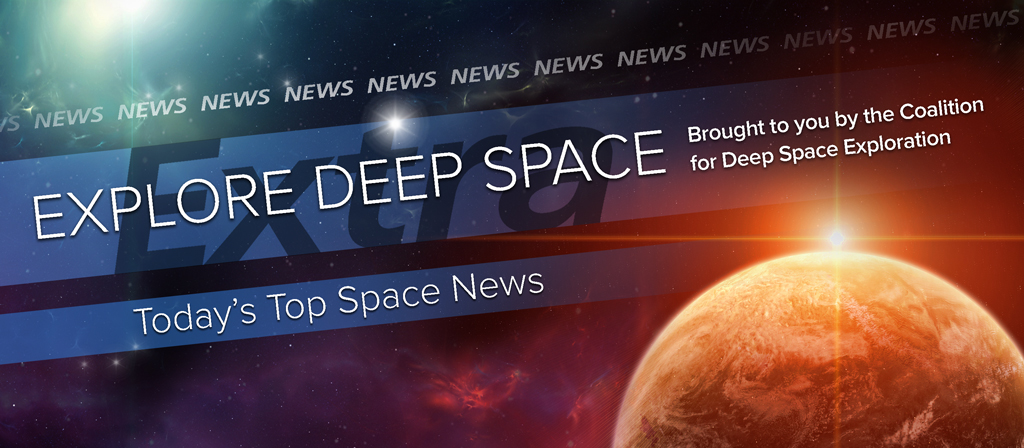In Today’s Deep Space Extra… NASA pursues Hall thruster development as part of a deep space propulsion strategy for future human exploration.
Human Deep Space Exploration
NASA taps Aerojet Rocketdyne to develop Hall electric propulsion system
Spaceflight Insider (2/17): NASA awards Aerojet Rocketdyne a $2.5-million-contract to pursue development of a high-powered Hall thruster system as part of a Solar Electric Propulsion technology that could evolve into a key part of reaching deep space destinations with human explorers. The space agency is seeking a 100 KW thruster system with components that could achieve 250 KW, according to the report on the potential of Aerojet Rocketdyne’s Nested Hall Thruster technology.
Inside the wild and wildly successful early years of Mission Control
Ars Technica (2/17): In its early years, NASA’s Mission Control was filled with colorful personnel occasionally called on to make on-the-spot life and death decisions. Milt Heflin, a veteran of the Apollo moon missions and the space shuttle period, recalls their stories in the book Go, Flight!
Space Science
NASA’s next big space telescope coming together despite “Snowzilla”
Space.com (2/17): Scientists overcame a major East Coast blizzard this winter to reach a major milestone in the development of the James Webb Space Telescope, the designated successor to the Hubble Space Telescope. Earlier this month, they completed the assembly of the 18-segment, 21-foot-wide JWST primary mirror at NASA’s Goddard Space Flight Center in Maryland. The telescope’s launch is planned for October 2018, following rigorous testing and final assembly.
The truth about exoplanets
Nature News (2/17): Astronomers now count more than 2,000 planets beyond the solar system. With the count climbing, astronomers are starting to characterize these finds. Spectroscopy is a key, and the experts are counting on advances like the James Webb Space Telescope to advance their ability to scrutinize distant planets for evidence of habitable environments.
Top 10 astronomical discoveries of all time
Discovery (2/17): Discovery Channel’s history of the James Webb Space Telescope, the next step in the evolution of space observatories, is scheduled for broadcast Feb. 20 at 9 p.m. JWST is scheduled for launch in October 2018. Top astronomy discoveries so far include gravity, a cosmic speed limit and expansion of the universe.
Check out the first-ever, user-friendly map of Mars; you might need it
Christian Science Monitor (2/17): British cartographer Chris Wesson has developed a user-friendly map of Mars using findings from NASA spacecraft.
China uprooting thousands to build telescope searching for aliens
Mashable (2/17): China is taking on the challenge of searching for signals from intelligent alien civilizations. The five-hundred-metre Aperture Spherical Radio Telescope, or FAST, is the largest observatory of its kind. China is moving residents of the Guizhou region in the country’s southwest to make way for the construction.
Asteroid murder mystery solved
Space.com (2/17): Asteroids whose trajectories bring them close to the sun appear to face a natural breakup that may be linked to their composition, according to an international team of researchers. “The discovery that asteroids must be breaking up when they approach too close to the sun was surprising,” according to one of the authors of a study published Wednesday in the journal Nature.
Low Earth Orbit
NASA plans to light a fire in a spacecraft, then watch what happens
Air and Space (2/17): NASA astronaut Tim Kopra, a current resident of the International Space Station, is in charge of BASS-M, or the Burning and Suppression of Solids experiment, research that characterizes how fire behaves in weightlessness. The experiments, carefully constrained, could save lives.
JAXA names new orbiting X-ray astronomy satellite “The Eye”
The Japan Times (2/18): Successfully launched earlier in the day, Japan’s new space X-ray observatory was christened the Hitomi, or Eye, late Wednesday. Observations of distant black holes and galaxies are planned.
Commercial to Low Earth Orbit
Mold cleaned from International Space Station cargo bags
Florida Today (2/17): Cargo headed to the International Space Station in March has been cleansed of a mold that might have settled in aboard the International Space Station. The cleanup at NASA’s Kennedy Space Center clears the way for a Mar. 22 lift-off of Orbital ATK’s Cygnus resupply craft atop a United Launch Alliance Atlas V rocket.
Op-Ed | U.S. Air Force takes positive step with space-based environmental monitoring RFI
Space News (2/17): The U.S. Air Force’s interest in turning to commercial sources of data to monitor the weather and other potential environmental threats as an efficient, less costly alternative to developing and monitoring its own systems could be a natural fit, according to an op-ed.

